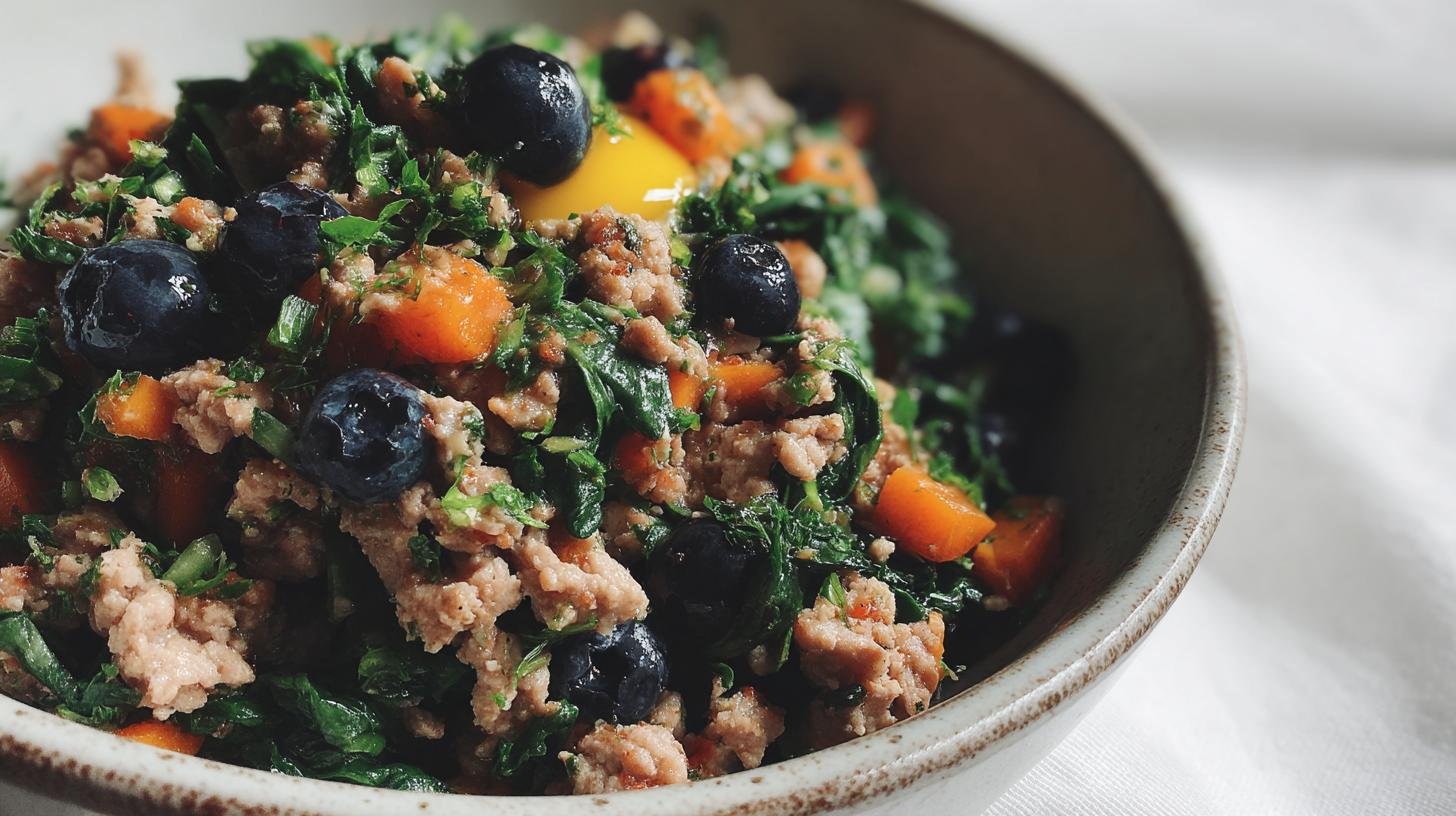Feeding small dogs has always felt a little more personal to me—maybe it’s their tiny paws or those big eyes that make you want to give them the absolute best. That’s why I started exploring raw food for small dogs years ago, after my little terrier developed skin issues and low energy on commercial kibble. Within weeks of switching to a fresh, balanced raw diet, she perked up like a puppy again!
Raw meals made with real, whole ingredients can support healthy digestion, boost energy, and even help keep that silky coat shining. And for small breeds with sensitive systems, the right balance of proteins, veggies, and healthy fats makes a huge difference.
I’ve been making homemade pet food ever since—testing, adjusting, and learning from both vets and fellow dog lovers. This recipe is one of my go-to meals for our small pups. It’s simple, nourishing, and easy to prep. Just remember: every dog is different, so always check with your vet before switching to a raw diet, especially for the little ones.
Ingredients for Raw Food for Small Dogs
This recipe keeps things simple while packing in the nutrients your small pup needs. I always aim for a mix of lean protein, organ meat, fresh veggies, and a splash of healthy fat. Here’s exactly what you’ll need:
- 1 cup ground chicken (you can also use turkey or lean beef)
- 1/4 cup chicken liver, finely chopped (don’t skip this—it’s full of nutrients!)
- 1/2 cup spinach, chopped (fresh or lightly steamed is fine)
- 1/4 cup carrots, grated (adds crunch and color)
- 1 tablespoon fish oil (for omega-3s and a shiny coat)
- 1 egg, optional (great for extra protein and healthy fats)
- 1/4 cup blueberries (antioxidant-rich and pup-approved)
Try to use organic ingredients when you can, especially for the protein and produce. And always wash your hands and prep tools thoroughly—raw food safety matters just as much for our pets as it does for us.
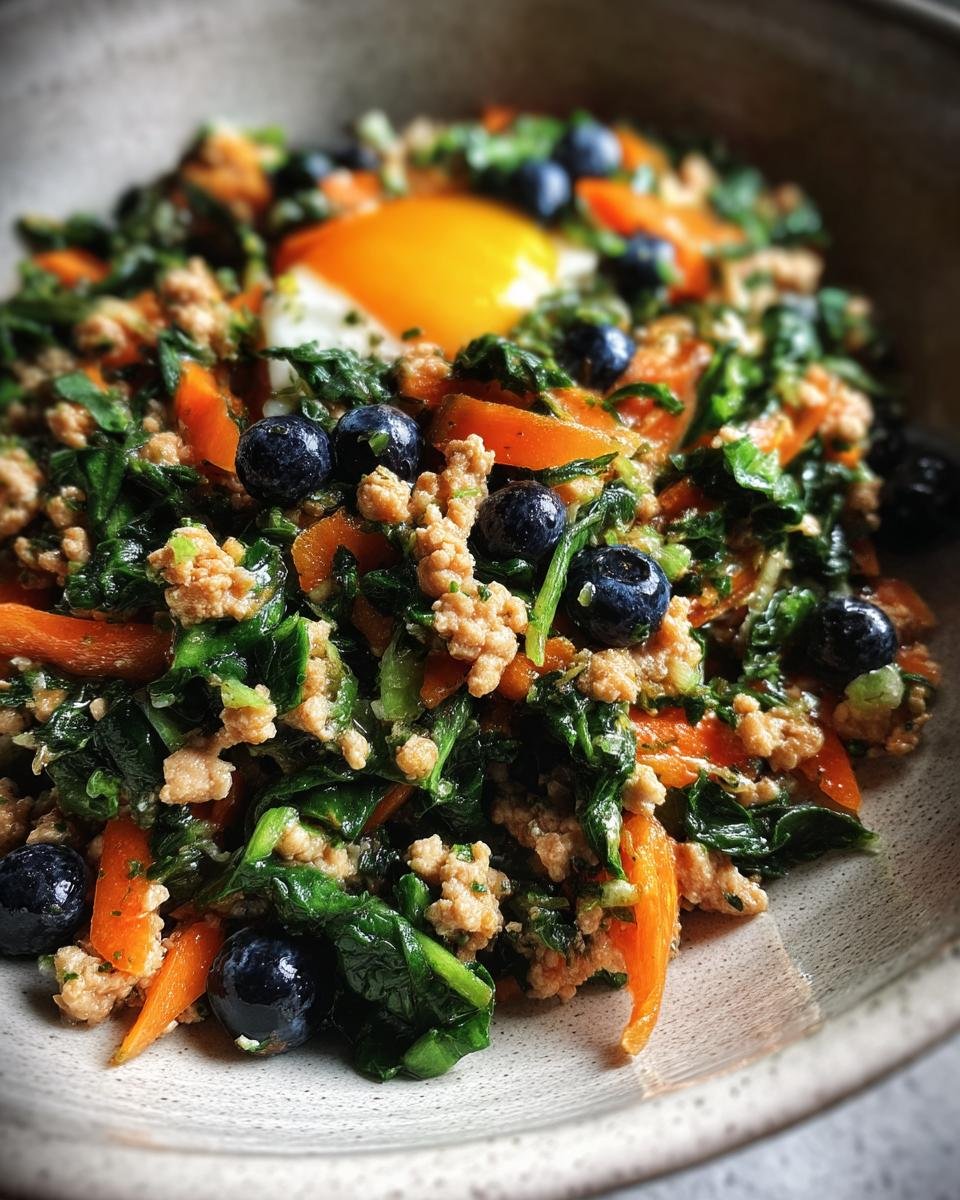
How to Make Raw Food for Small Dogs
Making raw food at home might sound intimidating at first, but I promise—once you’ve done it once, it’s a breeze. I usually prep a few days’ worth in one go and store it in little containers ready to grab and serve. Here’s exactly how I do it:
- Start with the protein base. In a large bowl, combine 1 cup of ground chicken and 1/4 cup of finely chopped chicken liver. Use a fork or your hands to mix them together evenly. This combo gives your pup both lean protein and vital nutrients from the organ meat.
- Add the veggies and fruit. Toss in 1/2 cup chopped spinach, 1/4 cup grated carrots, and 1/4 cup blueberries. The colors alone are gorgeous, and they bring fiber, vitamins, and a little natural sweetness.
- Mix in the healthy fats. Stir in 1 tablespoon of fish oil. If you’re using the optional egg, crack it in now and mix everything thoroughly. The egg adds a nice binding texture and an extra boost of nutrients.
- Portion it out. Divide the mixture into meal-sized servings based on your dog’s weight. For my 10-lb pup, about 1/4 to 1/3 cup per meal works well. Label containers if you’re prepping different batches.
- Store properly. Keep portions in airtight containers. Refrigerate what you’ll use in the next 2–3 days, and freeze the rest. Just thaw overnight in the fridge before serving. Never leave raw food out for more than 30 minutes.
That’s it! It’s quick, wholesome, and gives you total control over what your little one is eating. Once you get the hang of it, you’ll wonder why you didn’t start sooner.

Why Raw Food for Small Dogs Is a Smart Choice
Once I switched to raw food for my little ones, I noticed changes almost immediately. Their energy shot up, their breath improved (yes, really!), and their coats got shinier and softer. Small dogs often have sensitive systems, and this kind of fresh, balanced diet can work wonders. Here’s why it’s such a great option:
- Better digestion: Whole, unprocessed ingredients are easier on tiny tummies and can reduce bloating, gas, and upset stomachs.
- More energy: Natural proteins and healthy fats fuel your pup throughout the day without the sugar crashes of carb-heavy kibble.
- Shinier coat and healthier skin: Thanks to omega-3s from fish oil and the nutrients in liver and egg.
- Portion control: You control exactly what goes in each serving—no fillers, no mystery ingredients.
- Improved appetite: Many picky eaters perk up when real food hits their bowl.
It’s amazing how much a simple shift in diet can improve your small dog’s quality of life—and it all starts with the right ingredients.
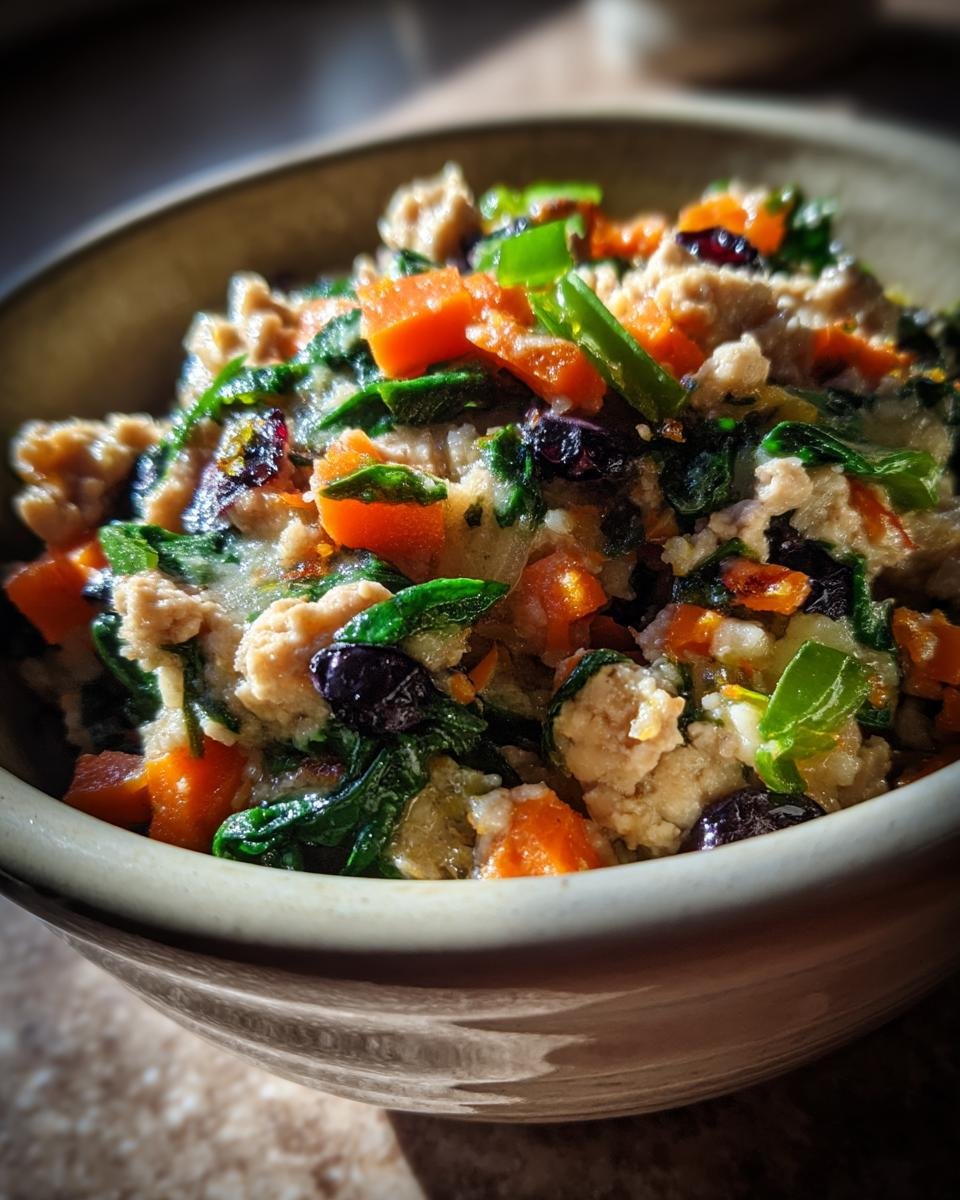
Tips for Success with Raw Food for Small Dogs
Feeding raw can feel like a big switch at first, but with a few smart habits, it becomes second nature. Here are the tips I swear by to keep things safe, simple, and stress-free:
- Start slow: Transition gradually over 5–7 days to avoid tummy troubles. Mix raw with their usual food at first.
- Use fresh, high-quality ingredients: Opt for organic produce and hormone-free meats when possible.
- Keep it clean: Wash your hands, utensils, and bowls thoroughly—just like you would with your own food.
- Portion carefully: Small dogs don’t need much. Overfeeding can cause weight gain, even with healthy food.
- Never leave food out: Discard uneaten raw meals after 30 minutes to avoid bacteria growth.
- Watch for reactions: If your pup gets itchy, gassy, or sluggish, talk to your vet and adjust the ingredients.
Every dog is different, so pay attention to how yours responds—and don’t be afraid to tweak the recipe as needed!
Ingredient Substitutions and Notes
This recipe is flexible, which is great if you’re working with what’s in your fridge or pantry. You can swap ground chicken with turkey or lean beef—just avoid fatty cuts. For veggies, try zucchini, green beans, or kale instead of spinach and carrots. If your pup isn’t a fan of fish oil, flaxseed oil is a decent backup, though it’s not quite as rich in omega-3s.
The egg is totally optional—I like adding it for extra protein and a little binding power. Just a reminder: never use onions, garlic, grapes, or chocolate in any dog food. They’re toxic to dogs, even in small amounts.
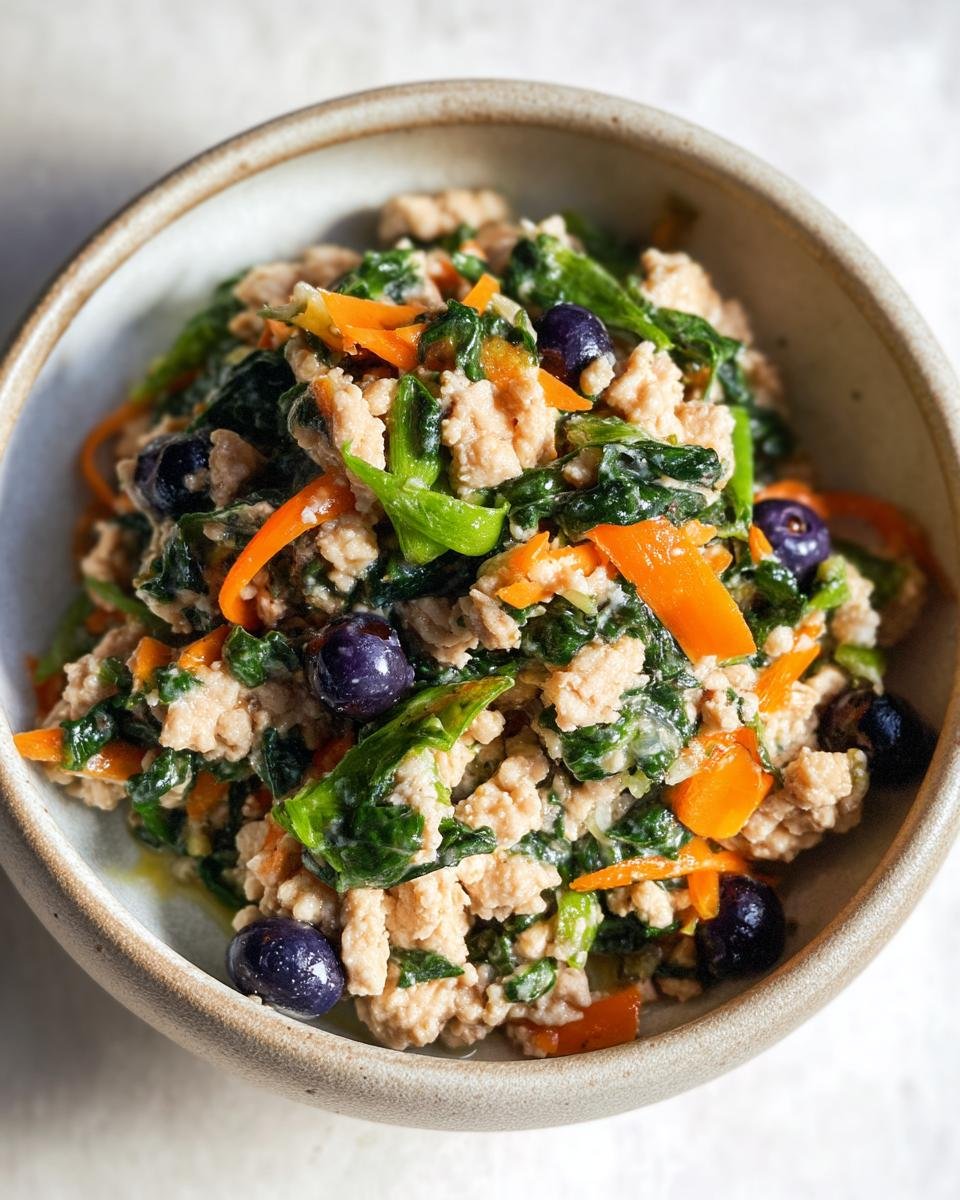
How to Store and Serve Raw Food for Small Dogs
Once your raw meals are prepped, storing them properly keeps everything fresh and safe. I portion the food based on weight—my 10-lb pup eats about 1/4 to 1/3 cup per meal. Smaller dogs need even less, so adjust accordingly!
Refrigerate what you’ll use within 2 to 3 days, and freeze the rest in airtight containers or silicone molds. When you’re ready to serve, thaw a portion overnight in the fridge. Never microwave raw food—it can cook it unevenly. And if your dog doesn’t finish their bowl within 30 minutes, toss the leftovers to avoid any bacteria risks.
Raw food is amazing, but it needs care. A little planning goes a long way to keep your small pup safe and happy at mealtime!
Nutritional Information for Raw Food for Small Dogs
Each 1/2 cup serving of this raw food recipe provides an estimated:
- Calories: 220
- Fat: 12g
- Protein: 18g
- Carbohydrates: 8g
- Fiber: 2g
- Cholesterol: 70mg
These numbers are based on the ingredients listed and may vary depending on what you use. If you’re adjusting the recipe or using different brands, the nutritional values can shift a bit—so consider chatting with your vet if you want a more tailored breakdown for your pup’s needs.
Frequently Asked Questions About Raw Food for Small Dogs
Switching to a raw diet can spark a lot of questions—totally normal! I had a million when I started. Here are the ones I get asked most often about raw food for small dogs:
Is raw food safe for small dogs?
Yes, as long as it’s balanced and handled safely. Small dogs can absolutely thrive on raw food when it’s made with high-quality ingredients and proper hygiene. Always consult your vet first, especially if your pup has health concerns.
How much should I feed?
It depends on your dog’s weight, age, and activity level. A general rule of thumb is 2–3% of their body weight per day, split into two meals. For a 10-lb dog, that’s around 1/4 to 1/3 cup per meal.
Can I use different meats?
Absolutely! Ground turkey, beef, or even lamb can work. Stick with lean cuts and avoid anything heavily marbled or seasoned.
Do I need to add supplements?
Not always, but some pups may benefit from extra calcium or omega-3s. Chat with your vet to see if your recipe needs a little boost.
What are signs it’s not working?
Watch for fatigue, itchy skin, loose stools, or changes in appetite. If anything seems off, adjust ingredients or portion size—and of course, check in with your vet.
Share Your Raw Food for Small Dogs Experience
I’d love to hear how this recipe worked for your pup! Did they gobble it up? Notice any changes in energy or coat? Drop a comment below and let me know—your feedback helps other pet parents, too. If you tried any fun ingredient swaps, share those as well!
Don’t forget to bookmark this page for your next meal prep day, and feel free to pass it along to a fellow dog lover looking to try raw food for their small dog. Happy tails and happy bowls!
Print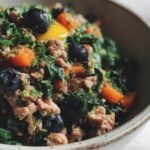
Raw Food for Small Dogs: 1 Recipe That Transformed My Pup
- Total Time: 20 minutes
- Yield: 4 servings 1x
- Diet: Low Lactose
Description
A balanced raw food recipe tailored for small dogs, using fresh ingredients to support their energy and health needs.
Ingredients
- 1 cup ground chicken (or turkey/beef)
- 1/4 cup chicken liver (finely chopped)
- 1/2 cup spinach (chopped)
- 1/4 cup carrots (grated)
- 1 tbsp fish oil
- 1 egg (optional)
- 1/4 cup blueberries
Instructions
- Combine ground chicken and liver in a mixing bowl.
- Add spinach, carrots, and blueberries; mix thoroughly.
- Stir in fish oil and egg (if using).
- Portion into meal-sized servings based on your dog’s weight.
- Store in airtight containers; refrigerate for up to 3 days or freeze.
Notes
- Consult your vet before switching to a raw diet.
- Use organic ingredients if possible.
- Discard uneaten food after 30 minutes.
- Introduce new foods gradually to avoid digestive issues.
- Avoid onions, garlic, grapes, and chocolate.
- Prep Time: 20 minutes
- Cook Time: 0 minutes
- Category: Dog Food
- Method: Raw
- Cuisine: Pet Food
Nutrition
- Serving Size: 1/2 cup
- Calories: 220
- Sugar: 2g
- Sodium: 45mg
- Fat: 12g
- Saturated Fat: 3g
- Unsaturated Fat: 7g
- Trans Fat: 0g
- Carbohydrates: 8g
- Fiber: 2g
- Protein: 18g
- Cholesterol: 70mg

